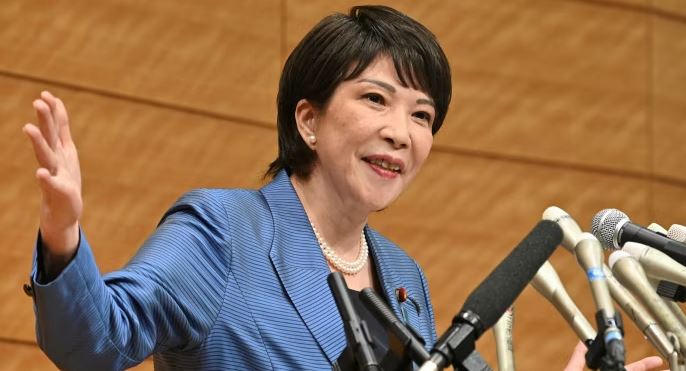Japan could make history on Friday as the ruling Liberal Democratic Party (LDP) holds a leadership vote that could result in the country’s first woman or youngest-ever prime minister. The race, deemed one of the most “unpredictable” in years, comes as a record nine candidates vie for the position following the dissolution of long-powerful LDP factions earlier this year due to a funding scandal.
With the LDP holding a parliamentary majority, the winner is virtually guaranteed to become the next prime minister, and they are expected to call a snap election to consolidate their mandate.
Leading Contenders Emerge
Three candidates have emerged as frontrunners: former Defense Minister Shigeru Ishiba, 43-year-old Shinjiro Koizumi—the son of a popular former prime minister—and nationalist hardliner Sanae Takaichi, who could become Japan’s first female prime minister.
The new leader will face significant challenges on the international stage, with mounting regional security threats posed by China’s growing assertiveness, its deepening ties with Russia, and North Korea’s missile tests.
Domestically, the prime minister will be tasked with revitalizing Japan’s economy amid rising inflation and the central bank’s shift away from decades of monetary easing, which has weakened the yen.
Unpredictable Race
The LDP’s internal factions, which traditionally played a key role in leadership contests, disbanded earlier this year. Without factional support, the vote is expected to be closely contested. Jeffrey J. Hall, a lecturer at Kanda University of International Studies, described the race as “a toss-up,” noting that while some candidates “have no hope whatsoever,” the contest remains highly unpredictable.
“This is the most unpredictable LDP election in many years,” Hall told AFP.
Ishiba’s ‘Fair and Square’ Approach
Shigeru Ishiba, 67, is a veteran of LDP politics and has come close to securing the top job before. In 2012, he narrowly lost to Shinzo Abe, Japan’s longest-serving prime minister who was tragically assassinated in 2022. Known for his “fair and square” stance, Ishiba has long been a critic of certain LDP policies, making him a more popular figure among the public than within the party.
Political analyst Yu Uchiyama from the University of Tokyo suggests that public discontent with the LDP could work in Ishiba’s favor this time around, despite past friction with party insiders.
Takaichi: A Conservative Stalwart
Economic Security Minister Sanae Takaichi, 63, is the most conservative candidate among the frontrunners and is not seen as the preferred choice for feminist voters. She opposes legal reforms to allow separate surnames for married couples and regularly visits Tokyo’s Yasukuni Shrine, a controversial site in Japan’s relations with China and South Korea.
However, Naofumi Fujimura, a professor at Kobe University, suggests that Takaichi might adopt a more centrist, pragmatic approach if she secures the prime ministership, despite needing right-wing support to win the election.
Koizumi: Youth and Change
Shinjiro Koizumi, the 43-year-old former Environment Minister, would be Japan’s youngest-ever prime minister. Koizumi, known for his charismatic appeal and progressive views, symbolizes a potential rejuvenation for the LDP. However, his critics, including his father, former Prime Minister Junichiro Koizumi, argue that he lacks the experience to lead the country.
Analysts, such as Uchiyama, warn that while Koizumi represents change, many within the LDP may feel he lacks the stability needed for such a critical role.
Other Candidates
Among the other candidates is reformist Taro Kono, 61, who has gained popularity for his direct approach, and Toshimitsu Motegi, known as the “Trump whisperer” for his ability to manage tough trade talks with the former U.S. president. Also in the running are Chief Cabinet Secretary Yoshimasa Hayashi and the wildcard candidate Takayuki Kobayashi, one of the few contenders under 50.
The Path Ahead
The winner of Friday’s vote will be formally elected by parliament on October 1. The LDP has governed Japan almost continuously for decades, with opposition parties often failing to present viable alternatives.
Outgoing Prime Minister Fumio Kishida, who is not seeking re-election, has seen his leadership marred by scandals and declining poll numbers. Despite overseeing significant defense policy changes and bolstering Japan’s relationship with South Korea, Kishida’s tenure was overshadowed by rising living costs and public dissatisfaction.
Whoever emerges as Japan’s next prime minister will inherit a nation grappling with both economic pressures and a shifting geopolitical landscape, where strong leadership will be crucial to navigate the challenges ahead.



